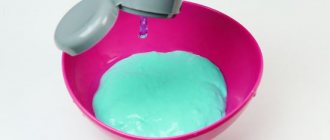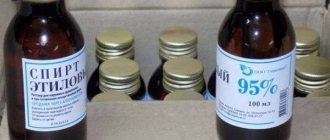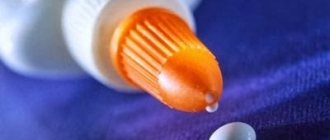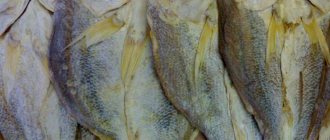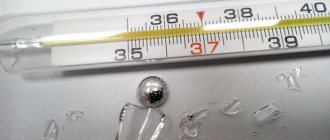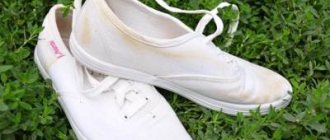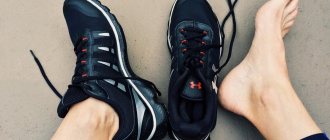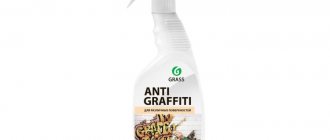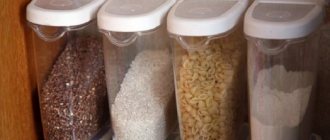How to restore a glue stick
PVA normally contains water, so it should be restored with water. Try giving the glue a water bath. This term means that the pencil in the open state must be held over a small volume of steam for about five minutes, that is, the glue of the pencil must be melted. Another way: you can put an open glue stick in a bag along with a wet napkin and sponge and put it in a warm place. In other words, PVA glue must be soaked in water and then melted.
If your PVP, which contains glycerin as a humectant, has dried out, you can restore the pencil only with glycerin. The method for resuscitating it is similar to the same process with PVA. Try moistening a cosmetic cotton pad with glycerin and wrapping it around a glue stick, putting it in a bag, and the bag itself on a hot radiator.
Rules for preparing paste
- wallpaper paste is not prepared from wheat flour, as this leads to yellowing of the paper material after drying;
- Considering that the product contains food products, it can attract insects, add a small amount of karbofos;
- when the paste is being prepared, how to improve its properties - this also needs to be thought about, for example, a warm microclimate helps reduce the effectiveness of the composition, you need to find out in advance how to properly store the glue - the temperature should be within +18...+20°C;
- a paste that is too thick will not provide the required effect, a change in the structure of the substance is due to its prolonged cooking, in this case the product is diluted with water again (a small amount is introduced) and heated, but for a short period;
- when the paste is being prepared, the heating temperature of the liquid should not be higher than +40°C;
- to improve properties, PVA glue is added to the composition, but its content should not be higher than 5%;
- as the substance is used, it will lose properties (gradually thicken); Hot water will help restore its original structure - add 1 tbsp. l., constantly stirring the product using a blender or mixer - you should act quickly, because the composition will soon thicken again.
What to do if glue gets on the skin or mucous membranes
If glue gets on the skin of your hands, then before it hardens, you can clean it off with nail polish remover or a mixture of vinegar, soap, and water. When the glue has already dried, the following methods are used:
- soften the glue with acetone and then wash your hands with soap;
- steam your hands, and then carefully, gently rub the contaminated areas with a pumice stone (or a nail file);
- pour salt into wet hands and rub it until the glue begins to come off.
After such procedures, which have an aggressive effect on the skin, it is definitely recommended to use hand cream.
- How to restore the heated rear window of a car
Important! If glue gets into the eye, it must be immediately rinsed with warm boiled water using a pipette or other method. After this, drop an anti-inflammatory agent into the eye and be sure to contact a medical facility.
How to dilute universal glue?
Universal glue
and extra, when thickened, can
be diluted
with acetic acid or solvents (acetone or benzene).
Interesting materials:
What to do if non-woven wallpaper comes off? What to do if a piece of your front tooth breaks off? What to do if a small piece of your front tooth breaks off? What to do if the logarithm is negative? What to do if the tiles come off? What to do if a piece of a tooth falls off? What to do if the package is stuck to the iron? What to do if your phone memory is full and there is nothing to delete? What to do if a guy loves his ex-girlfriend? What to do if a guy constantly talks about his ex?
Cleaning clothes from bustilate
To ensure that the process of removing bustilate (tile adhesive) from things goes smoothly, you can soak the soiled item in warm water. The glue should become wet and further removal will not be difficult.
- If the bustylate layer is thick enough, you can first try to scrape it off with a sharp object. This way he can get wet faster.
- Warm water or vinegar can give you good cleaning results. Using a swab moistened with the solution, you need to continue wiping the area of contamination until the glue stains completely disappear.
- If complete cleaning is not possible, you can try using denatured alcohol. The material soaked with it is left for 30...40 minutes, after which the substance is washed off with warm water and washing powder.
Removing glue from clothes and removing stains
Cleaning laundry from paste
Paste stains are also quite easy to remove.
- The area with the adhesive smudge should be rubbed with washing powder, and the clothes should be allowed to soak in warm water for 6…8 hours. During this time, the paste will soak well, after which the item of clothing should be washed in the usual way, as is always done.
- Wallpaper paste is removed in a similar way. Before you send soiled clothes to the wash, you need to soak them in a soapy solution, after washing the place where a drop of glue dropped.
Kerosene for stain removal
How to make slime without thickener (with water)
There are only two main ingredients here - adhesive stick and water (dye - optional). You will also need a bowl - it will need to be placed in the microwave and refrigerator.
Read also: Rack made of furniture board
The manufacturing process is simple:
Cut the glue into small pieces into a bowl - you don't want to melt the whole glue sticks in this recipe.
Pour water into the glue and stir lightly with a spoon.
Recipe for papier-mâché
You need to take a glass of flour, half a teaspoon of salt and 3 glasses of water. The composition is prepared as follows:
- sifted flour is poured into a glass of water and kneaded until smooth;
- salt is added and kneaded again;
- 2 cups of water are boiled in a separate pan and then added to the adhesive composition;
- The resulting mixture is boiled over a fire for 10 minutes, removed from the stove and left to cool completely.
If making papier-mâché involves using paper soaked to a plastic mass, the paste needs to be made more liquid, then no more than 100 g of flour should be used per liter of water.
How to clean glue from different surfaces
For each type of surface, you can use only suitable products so as not to spoil the item and deal with contamination most effectively.
Plastic
This material does not tolerate exposure to solvents, temperature changes, and is susceptible to mechanical damage. Therefore, you cannot use acetone, gasoline, heat with a hairdryer, or try to scrape off the stain.
The following tools are suitable:
- nail polish remover that does not contain acetone;
- pharmaceutical dimethyl sulfoxide - use carefully, because it also has quite a strong effect;
- alcohol does not remove such stains, but it can be used to soften dried glue without damaging the plastic surface, making it easier to remove later;
- the safest way (suitable only for those surfaces that do not absorb oil) is to try to soften the glue with vegetable oil or Vaseline (you will have to wait a long time), and then carefully remove the film;
- try to cut it carefully with a sharp blade.
Advice! The easiest way to remove glue from plastic is when the stain is still fresh. In this case, it will be enough to wipe it well with a cloth and then rinse with soapy water.
Glass
Regular glass can be easily cleaned using:
- acetone, white spirit and other solvents;
- regular windshield wiper;
- The softened glue can be easily scraped off with a blade or a stationery knife.
Plexiglass cannot be cleaned with abrasives or scraped with a blade, because it can be easily scratched. Acetone is also not suitable. In this case, use:
- alcohol;
- refined gasoline;
- vinegar, etc.
Tree
Acetone is suitable for this surface, but only if it is not painted or varnished. The product should be applied to the stain, and after a few minutes wiped with a damp cloth.
Paintwork
Caustic substances will damage the painted surface, so the same products are used here as for plastic, plexiglass, and linoleum. Heating with a hairdryer to soften it, which is often used for other materials, will not work, because high temperatures cause the varnish coating to become cloudy, crack, and bubble.
Metal
This surface can be easily cleaned with acetone or solvent, but due to the fact that they quickly evaporate from it, the glue does not have time to soften. Therefore, they do this: a swab dipped in a solvent is applied to the stain, then covered with film or glued with tape. After some time, remove the softened glue with rags and detergents. To liquefy glue that has dried on the metal, you can use a hot hair dryer.
Tile
Fresh glue can be easily washed off with a damp cloth and dishwashing detergent. Hardened stains are cleaned with special building compounds and gels. Home remedies that work well include vinegar or citric acid.
How to soften slime if it has become hard (if the slime has dried out)
Do you want to know how to soften slime? Here you go. Due to improper storage, the toy may shrink in size, stretch poorly and tear. No need to throw it away right away, let's try to save your friend. For these purposes, water, glue, shaving foam or boric acid are used. But you need to soften the slime with exactly the same products that were originally in its composition. In this case, it will regain its previous consistency.
We influence with heat
Change of structure
Let's figure out how to make the slime softer again. Let's look at some of the best instructions to help your slime soften if it's not stretching. They are based on exposure to high temperatures, as a result of which the structure of the toy becomes softer. Make sure children do not get burned when using these methods.
Using boiling water
Pour 150 ml of boiling water into a small bowl and place the affected toy in the container. Cover with a lid and leave for 5-10 minutes. After the specified time, carefully remove the lump and begin kneading without waiting for it to cool completely. The recipe is suitable if you need to soften slightly dried slime.
Soften in the microwave
If you need to quickly soften store-bought or homemade slime, this simple method will do. Place the toy in a plastic bowl, add 5 ml of boiling water and microwave for 40 seconds. The lump will become soft again and will stretch.
Let's introduce boric acid
If a lot of liquid is added to it when making a stretchy toy, the mass will harden and begin to release water. Let's figure out how to make it stretch again and become like new. You will need:
- Colgate toothpaste without whitening properties;
- boiling water;
- boric acid.
Pour 50 ml of boiling water into a deep bowl, add 0.5 teaspoons of Colgate and stir until a bubbly surface forms. Add the slime to the resulting mixture and stir with a spoon for about 5-7 minutes. As it absorbs more water and toothpaste, you will see results. The mass will stick to the walls, but after 5 minutes of constant stirring it will begin to curl into a lump. Add 15 ml of boric acid and continue stirring. If the slime does not curl, you need to add another 10 ml of thickener.
Save with shower gel
Now we’ll step by step figure out how to make the slime softer if it was initially stretchy and then hardened. You will need 100 ml of boiling water, 10 ml of thick shower gel or any shampoo. Add the ingredients to the bowl and mix everything thoroughly. Dip the slime into this mixture and knead with your hands until it becomes soft. The lump will increase in size and become fluffier. This is the first stage of softening.
Now place the dried slime in a clean container to dry it of excess liquid. You can blot it with a napkin. After this procedure, the slime often begins to stick to your hands, so you need to add 1 teaspoon of boric acid. If you did everything correctly, the lump will become soft and stop sticking to the skin.
If you overdo it and the consistency has become too thin, mix 5 g of soda in 100 ml of water and add 15 ml of the resulting mixture to the slime. Read more in the article “What to do if the slime is too liquid and does not thicken.”
No heat instructions
What to do if the slime is dry
If a stretchy lump has never dried out before, but now stretches heavily in your hands, let’s try to save it with the help of cosmetics. Be careful with them. If you overdo it, the slime will become too runny.
Dilute with Johnson's Baby Lotion
The slime should be soft so that it can be stretched comfortably. If it becomes hard and begins to tear, try diluting it with Johnson's Baby body lotion. Pour 10 ml of product onto the toy and knead like dough. After a couple of minutes, you will feel that the slime becomes more pliable and stretches well again.
Add body cream
There is another instruction on how to make the slime that dries softer . It is not suitable for rehabilitating store-bought slime, only for homemade slime. Squeeze 20 ml of body cream into a bowl. Use a thinner product; a thick buttercream is not suitable.
Now add 5 ml of water, stir the mixture, dip the slime in it and leave for 4-5 minutes. To make it softer, knead it thoroughly in hands lubricated with cream.
Using varnish remover
The new slime is pliable and stretches well in your hands. If it has dried out and is torn, let's try to make it more viscous again. You need to pour 0.5 teaspoon of nail polish remover onto the lump. It will feel pleasant and knead it will be very easy. Now you need to add shaving foam (3-4 sprays) and knead again in your hands. The slime will stretch again and become elastic.
Do not allow nail polish remover to come into contact with mucous membranes and do not inhale its vapors.
Saving with shaving foam
If the slime you made at home doesn’t stretch and breaks, we’ll try to save it with shaving foam. Don't use the gel because it has a completely different consistency and is useless when softening. Make 3-4 sprays per lump and knead in your hands. The toy will increase in size and become more magnificent. If it sticks to your hands too much, add 1 teaspoon of boric acid and knead again. For convenience, you can do this in a thick plastic bag.
Toothpaste and Panthenol
There is another instruction that tells you what to do if the slime is dry and breaks when stretched. Squeeze 0.5 teaspoon of toothpaste onto it and gently knead. Take a product without large granules and bleaching properties so as not to harm the skin of your hands.
Knead the toy vigorously, and after a couple of minutes it will become softer. But this is not the end of the instructions. To extend the life of a funny lump, take Panthenol in the form of a spray, make 2 sprays and continue to knead the lump. At first it will resemble rubber, but after 10 minutes it will slightly change color and become viscous.
If you liked the article, please like and share the link on social networks.
In the comments, tell us if you had to use the above instructions.
lizuny.ru
How to unscrew a dried tube of glue
If the tube cap is completely dry, there are several good methods that will allow you to solve this problem at home.
- Clamp the tube itself in the pliers and twist the cap by hand.
- Clamp the tube in the joint and twist the cap in the same way.
- Heat the lid in boiling water; it will expand and make it easier to unscrew.
- Just pierce the top of the tube with an awl, but use this method only in extreme cases, since you will then have to throw away the glue, and you can stain the surrounding area and yourself.
Why is glue stored in packaging for a long time?
When practicing with a dried tube, you can’t help but wonder why it doesn’t dry out in the package for so long? Manufacturers have only partially solved this problem, so read the adhesive service life date on the packaging. Typically the shelf life is 1-2 years.
Any adhesive contains a solvent that evaporates or reacts in open air. In stationery glue, casein glue or adhesive stick for paper, the solvent is water; in Moment type glue, the solvent is acid. The latter reacts with water molecules contained in the air during the gluing process.
Secondary superglues contain cyanoarylate, which polymerizes in atmospheric conditions and passes from a liquid substance to a solid one. So the answer to the question posed is very simple: there is no access to the atmosphere in the tube, so the glue does not disappear.
Removing epoxy glue stains
Dried clumps of epoxy resin are a rather unpleasant phenomenon. But it is quite possible to eliminate it on your own.
General “recipe” for removing “epoxy”
Epoxy glue is removed using a mixture of alcohol and turpentine - they should be mixed together in equal proportions. Solvent “646”, acetone, will also help.
It is important to consider the following point - these mixtures are easily flammable and have a pungent odor, so they must be handled with great care and preferably in the open air or in a ventilated area.
To get the best results when cleaning epoxy resin, the product must be placed in the freezer for 2…3 hours. The adhesive mass will freeze, and the removal process will be much more efficient and faster.
Large pieces of resin must first be removed mechanically, for example, by carefully scraping them with a knife or a thin file. Naturally, this cleaning method will be appropriate only for products made of coarse material: aprons, work clothes for work in workshops, denim trousers, terry robes, mattresses.
Linoleum and acetone glue
To prepare it we do the following:
- We take old, unnecessary linoleum, cut it into small pieces and place it on the bottom of a deep plate.
- Then we take acetone (in a ratio of 1:2, where 2 parts are acetone) and pour it over the chopped pieces.
- Close the lid tightly and let it brew for 12 hours in a dark place.
It perfectly adheres to products made of metal, wood, leather, porcelain, etc.
Cleaning glue stains
Stationery glue, or it is also called silicate glue, due to its widespread use, is one of the most common types of adhesives. It is used almost everywhere - in kindergartens, schools, organizations, companies and firms.
Removing such a sticky mass from any surface will not be difficult. All you need for this is laundry soap.
The area stained with glue should be generously lathered with soap, then lightly rubbed with a brush or just with your hands. Next, the item will need to be washed in a washing machine or by hand, as is always done.
How to easily remove glue from clothes at home
Technical characteristics and purpose
Despite the differences in composition, glue sticks have a number of common characteristics:
- Glue sticks are non-toxic. They do not leave burns or other damage to the skin. The adhesive does not cause harm to health even if ingested.
- Ergonomics. The glue stick does not spill and does not stain your hands or furniture. The packaging is compact and convenient. The glue dries quickly.
- Economical. Minimum consumption and long shelf life.
See also Characteristics of EC 3000 glue and instructions for using the composition
The glue stick is designed for gluing paper and cardboard. Depending on the composition, it is used to join parts made of fabric and photographic paper.
They cannot be glued:
- glass,
- metal,
- plastic,
- ceramics.
These materials require other, stronger compounds.
General rules for removing stains
And although the method of removing the sticky component will depend on the specific type of fabric, there are a number of general rules and recommendations, using which you can easily remove any blots and smudges of glue at home, without causing serious harm to clothes and linen:
- Removal of adhesives must be done immediately, without delaying this procedure for a long time. This is especially true for waterproof adhesive compositions. Fresh glue is simpler and easier to remove than old or dried glue.
- In order to prevent damage to the material, the first step is to blot the adhesive mass with a paper napkin. Further, its remnants can be easily removed with some sharp object - a razor or a knife.
- If the work to remove a stain involves the use of aggressive chemicals, you should first make sure that they will not have a detrimental effect on the fabric itself. To check this, you need to saturate the wrong side or the least noticeable area of the material (for example, the cuff of jeans) with this product.
Using overly aggressive methods of cleaning material from glue blots can lead to damage to things.
A situation may occur that cleaning the fabric from glue will not bring the expected positive result, and the blot will still stand out on it. Then there is nothing else left - the product must be taken to the dry cleaner. Modern and effective methods of cleaning any things will make it easy to deal with the most difficult stains.
The article will describe options for removing certain types of glue from clothes, linen and other products.
Options for removing glue from clothes
Safety precautions
When using super glue itself, as well as solvents and other chemicals to eliminate it, you must strictly follow safety precautions. All of the above substances that can dissolve super glue can have a negative effect on the human body, and in some cases lead to irreversible consequences.
- Before using any product, you must carefully read the instructions for its use.
- Any manipulations with glue and solvents should be carried out in a well-ventilated area or in the fresh air.
- When working with chemicals and glue, do not wear cotton gloves. Once saturated through fabric, solvents can cause an exothermic reaction, which can cause burns to the skin. Therefore, it is worth stocking up on rubber gloves for work.
- Do not use glue, solvents or other toxic products if there are small children or animals in the room.
- Do not use chemicals near open flames or heating devices. It is also not recommended to smoke during the process.
- To avoid burns to the mucous membranes of the eyes, nose and mouth, it is strictly forbidden to lean over the work surface or get too close to it. The use of a respiratory mask is mandatory.
Today there are many ways to apply super glue. Solvents and other active substances are suitable for this, effectively removing traces of superglue from metal and other products. Experienced specialists will help you choose the most suitable one. The main thing is to be patient and not to neglect safety precautions.
Super glue
Superglue is rightfully considered one of the most difficult types of stains to remove from clothes, linen and other items.
You need to be careful when working with superglue as it is a very corrosive substance that will require some effort to remove.
First you need to pay attention to the manufacturer. Inexpensive gluing products made in China are much easier to remove than blots from a higher quality and more expensive product.
A drop of superglue on jeans, a terry robe, a towel and other dense material can be removed using acetone-containing nail polish remover.
Since acetone, which is part of it, can leave stains on the fabric, it is better to conduct a preliminary “test” on an inconspicuous area.
If a drop gets on silk or woolen material, you can remove the stain as follows:
- Prepare a vinegar solution, keeping the proportions 2:1 (20 ml of vinegar per 40 ml of water).
- The product is soaked in this solution for some time.
- Next, you will need to wash it in warm (but not hot!) water in the usual way.
- Fresh stains are removed with gasoline.
- Dried, old marks from superglue can be removed using paint removers or thinners.
- The freezing method is a good way to remove adhesives. The item of clothing with the stain is placed in the freezer for 1…2 hours. Now, if you intensively rub the area with the blot, the adhesive substance should be destroyed - the glue will begin to crumble and will easily come away from the fabric. Then the clothes will need to be washed.
It is possible that you will not be able to completely get rid of the glue blots the first time, but after several washes it will be practically unnoticeable.
- Citric acid solution. You need to prepare a solution from the following components: 100 ml of water and 20 ml of citric acid. Apply this solution to the stained area of the material, leave for 7...10 minutes, then use a hard sponge to remove marks.
- Scrub. An ordinary body scrub does a good job of removing superglue. You need to apply it to the stained area of clothing and, applying a little force, rub it with a sponge. Then wash off the scrub by rinsing the product with water.
Vinegar solution for removing stains
Features of the composition of superglue
Before moving on to the question of how to dissolve glue, it is worth understanding its composition.
The main feature of any super glue is the absence of organic solvents. Thus, they cause minimal harm to the human body and become more effective for fastening metal parts together.
The main component of super glue (about 98%) is cyanoacrylic acid ester (cyanoacrylate). It is this substance that has a high hardening rate and also ensures the reliability, strength and durability of joints.
In addition, the super glue contains the following components:
- plasticizer - makes the adhesive elastic;
- stabilizer - keeps the glue in a liquid state before use and gives it the necessary qualities after hardening;
- thickener - gives the gel consistency of the desired thickness;
- modifier - provides moisture and heat resistance;
- adhesion (adhesion) enhancer - necessary for stronger bonding of surfaces;
- substances that activate hardening (at low humidity) or inhibit the hardening of glue;
- fine metal powder - necessary to improve electrical conductivity.
Manufacturers produce super glue in blisters, tubes, jars, and also in the form of adhesive tapes. They have one thing in common: the packaging is always small in volume. After opening, you must use the entire contents, because... even a slight violation of the tightness turns the glue first into a viscous substance, and then the substance completely hardens and becomes unusable.
Application of Dimexide
Dimexide is an anti-inflammatory drug that can be purchased at any pharmacy. The solution has proven itself not only in treatment, but also in removing glue that has dried. However, it is not recommended to use it on plastic surfaces, because... it can deform them or change their color. To remove the adhesive solution, you need to wet a cloth with Dimexide and place it on the problem area until the stain is completely dissolved. After this, the remaining product can be easily removed with a damp cloth.
How to clean clothes?
How to remove dried glue from clothes? For this, white spirit, gasoline, as well as Dimexide and nail polish remover can be useful. In addition, kerosene, acetone or vinegar can help (see photo). The method for removing the adhesive solution will depend on the product available and the type of fabric. Let's look at some of them.
Thin cloth
This method of removing dried glue is suitable for thin fabrics. You need to take a cotton swab and dip it in white spirit or nail polish remover. The stain is rubbed off with light movements, after which the fabric must be soaked in a solution of water and soap. After some time, you need to wash the clothes yourself, paying special attention to contaminated areas.
Denim clothes
Moment can be removed from denim using gasoline, paint thinner or acetone. To do this, in order to avoid it sticking to the surface, you need to place thick cardboard under your clothes, moisten a cloth in the selected liquid and leave it on the affected area for about half an hour. If the procedure does not help the first time, it will need to be repeated.
Removing dried glue from surfaces
If the glue has frozen on the surface, it all depends on what type of glue it was.
- If you have dried PVA on your clothes, you will have to scrub it off with vinegar. Soon it will soften, and it will be possible to remove it in a continuous layer and wash the item. To remove from furniture upholstery, use the same method. If PVA gets on your glasses, monitor, or varnished surface, remove it with a mixture of warm water and soap. Wipe the stain off the glass with acetone.
- Sticky PVP should be removed with a solvent; where this cannot be done, before removing the layer you will have to soften the stain with glycerin
- The building material called “liquid nails” can be completely removed from the surface only if it has not yet completely dried. If it has already hardened properly, then it can only be partially torn off with a spatula, or carefully cut with a stretched wire under the base.
- If you have super glue dried on the surface, it will be difficult to remove. If the surface is furniture, leather or metal, rub the stain with vegetable oil until the glue rolls off. Wipe off plastic or glass with solvent. In the case of thin fabric, apply a solution of citric acid at the rate of 10 grams per 0.1 liter of water. Leave this solution for one hour, and then wash the fabric item.
How to remove from skin
In this case, it will be more difficult, because the person will feel how the hardened mass is erased from his skin; these sensations are not pleasant. If it is PVA or wallpaper paste, then simply thoroughly wash the area of skin stained with glue. If it was rubber glue, then soaking it for a long time in warm water will help you, or wipe off glue stains with gasoline, kerosene or acetone, after applying them to a rag.
If you happen to get dirty with superglue, the faster you start removing it from your body, the higher the likelihood of success. Water definitely won’t help here, so prepare acetone. If it is not available in its pure form, take nail polish that contains it. As a last resort, just wait a couple of days, the sebaceous glands themselves will remove the stuck film from your fingers.
How to clean clothes
Here, too, everything will depend on the type of glue. If there is PVA left on your laundry, wash your item in warm water using laundry soap. The same applies to stationery, provided that it has not yet had time to dry too much.
If silicate glue has dried on your clothes, place them in a basin with warm water, add washing powder, as well as baking soda at the rate of 40 grams per liter of water. After three hours you can start washing; the glue should have soaked by this time.
If your clothes were damaged as a result of a collision with Moment brand superglue, then you will have the hardest time. If it got there recently, wipe it off with gasoline. This glue can be removed from jeans using nail polish remover. If it is absorbed into silk or wool, such fabric should be soaked in a solution consisting of one part vinegar and two parts water, leave it for a while, and then rinse in cool water. After these operations, your fabric will most likely return to its previous appearance.
Application of Dimexide
A popular remedy in the fight against dried glue is a product such as Dimexide. It is sold in pharmacies, and the main active ingredient in it is dimethyl sulfoxide. Soak a cotton swab in this product and place it on the surface where the glue is stuck. After two or three hours you can mechanically remove it from the surface. If the result was not achieved the first time, repeat the procedure several times in a row. Remember that this method is not suitable for plastic, since after using dimexide the plastic becomes damaged.
How can you dissolve cyanoacrylate?
The only composition that dissolves very slowly in water is methyl cyanoacrylate. But superglue based on ethyl cyanoacrylate should not be wiped off with water, gasoline, or alcohol - it instantly hardens under their influence. If it has not yet dried, you can try acetone and acetonitrile.
Interesting materials:
What natural magnets exist in nature? What factors influence the magnitude of the thermal effect of a reaction? What factors influence the yield of raw gluten? What surnames did only nobles have? What kind of figures does Timati collect? What films were filmed in Polyarny? What films did Luc Besson create? What formats does the DVD player read? What formats does Windows Media Player support? What fruits does the elephant like?
Cleaning things from wood glue
In restoration shops and carpentry workshops, the main means for gluing wood materials is wood glue. Workers in such industries very often have to deal with blots from such glue. It is not at all easy to remove traces of this substance from things, but it is still possible.
- Clothes stained with wood glue are soaked in a basin of cold water. After 12 hours, the item should be washed in a washing machine at maximum water temperature.
- If noticeable stains remain after washing, the area should be scrubbed with a brush. Then wash again.
- Fresh marks are removed as follows: the product must be soaked in warm water for 3…4 hours. After this time, it goes into the washing machine to be washed.
- Old stains must first be softened, and then the adhesive mass must be carefully scraped off with a knife. The places where the blots hit can also be rubbed with a brush. At the end of this operation, rinse the item in hot water.
The mechanical method of removing stains should be used exclusively on rough fabrics.
... and in conclusion or some conclusions
Advantages and disadvantages of using thermite pencil
The main advantages of a metal welding pencil include:
- Ability to work in the most cramped, hard-to-reach places.
- Energy independence - no sources of electricity or gas are required.
- Small size - fits into a workwear pocket.
- The work does not require long training or special skills.
- Can work both in a workshop and in the field.
- The heat resistance of the seam is up to 180 °C, which makes the device indispensable when repairing household utensils and dishes.
- Cheapness.
Using a Welding Pencil
In addition to the advantages, like any actually used welding method, there are also disadvantages:
- The quality of the seam is lower than with electric or gas welding.
- Not suitable for large volumes of work.
- High material consumption.
The combination of advantages and disadvantages makes the method ideal for minor operational repairs.
Experience in resuscitation of materials (soften clay and glue)
Dried marshmallows (tested on Hearty soft) soften with a bang with water. I just periodically dip my fingers in water and knead the clay with them. It was not possible to restore it with cream - the clay came in pieces and nothing more could be done with it (except throwing it away).
Well, the last observation is working with latex glue. I don’t like PVA’s properties, and latex glue has the unfortunate property of thickening very quickly. To prevent thickening, I pour it into very small jars that can be tightly closed. But if the glue has thickened, it can be diluted with a small amount of ordinary water, constantly and thoroughly stirring with a stick when pouring (latex glue does not lose its adhesive properties - tested). At first there will be lumps, which will dissolve with time of stirring. The exception is completely dried latex glue; I couldn’t dissolve it (or I didn’t have the patience
